What is Dry Needling?

Rated 4.9 stars from 335+ reviews
We’re thrilled to announce receiving hundreds of five-star reviews! While we’d love to share these testimonials, regulations from the Australian Health Practitioner Regulation Agency (AHPRA) prevent us from displaying patient outcomes for regulated services such as Chiropractic, Physiotherapy, Osteopathy, Podiatry, and Acupuncture on this website. To read client feedback, please visit our Google Reviews directly.
Dry Needling
A Comprehensive Guide to Its Mechanism, Benefits, and Applications
Dry needling is a powerful tool in the treatment of musculoskeletal pain and dysfunction. You may have heard of this therapy and wondered if it’s right for you.
While the name of the procedure may sound intimidating, dry needling is an accessible and commonly offered therapy that targets and releases trigger points within muscles, improving blood flow, reducing pain, and enhancing mobility.
This guide provides an in-depth look at dry needling, how it works, its benefits, comparisons with acupuncture, and the latest research supporting its effectiveness.
Dry needling can be a game-changer in improving your quality of life by effectively managing pain and enhancing physical function.
Although generally safe, the procedure should be performed by trained professionals such as allied health practitioners to minimise risks and maximise benefits. Always ensure that you receive treatment from a qualified and experienced provider to achieve the best possible outcomes.
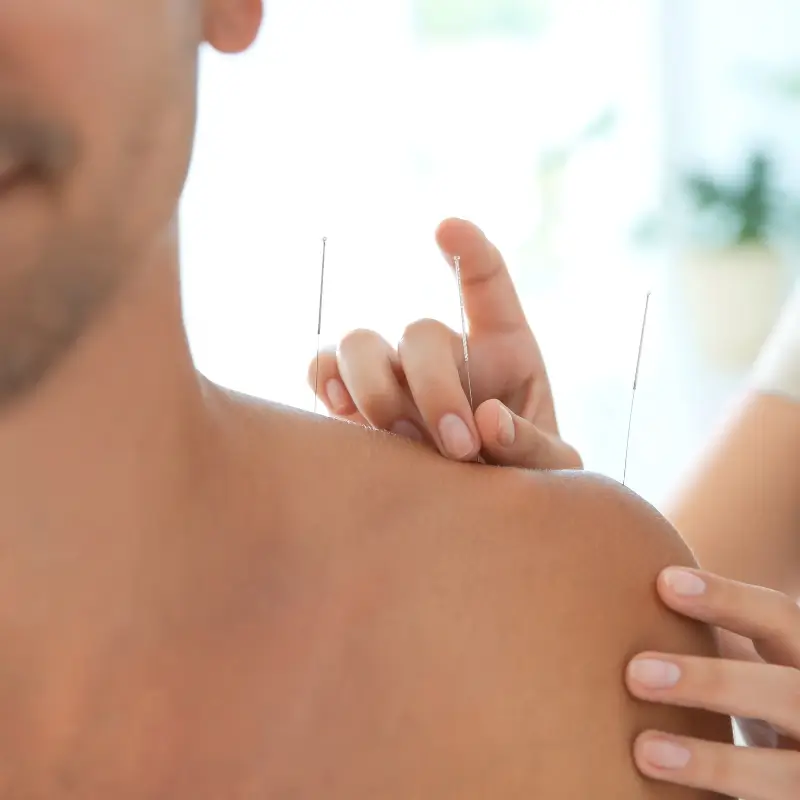
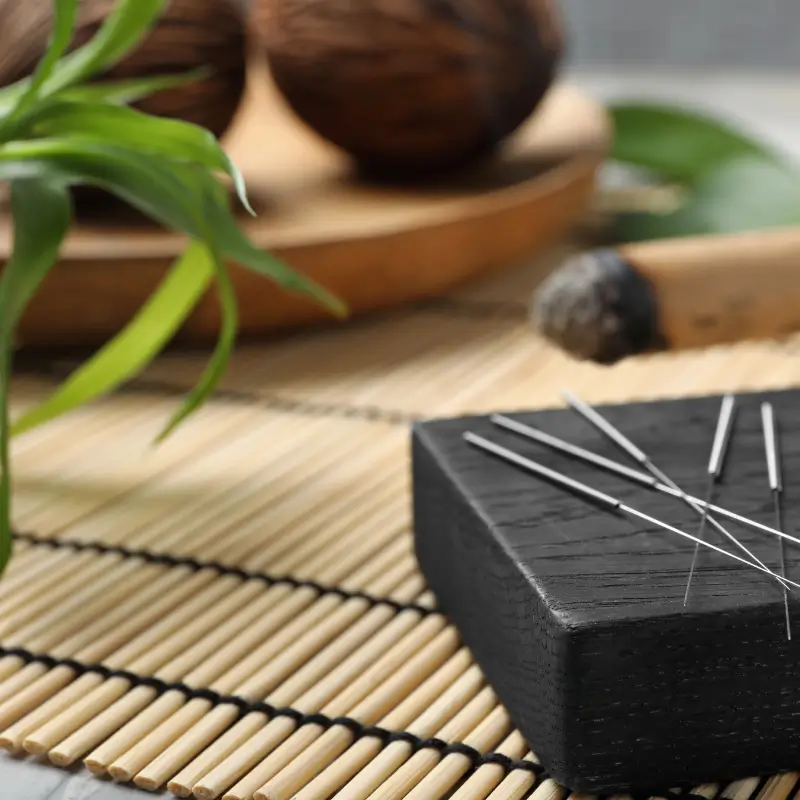
What is Dry Needling?
Understanding Dry Needling: A Detailed Overview of This Effective Pain Management Technique
Dry needling is a specialised technique used by healthcare professionals, including physical therapists and acupuncturists, to treat musculoskeletal pain and movement impairments. The method involves inserting thin, sharp monofilament needles into areas of muscle known as myofascial trigger points—knotted, tender areas within the muscles that can cause pain and restrict movement.
Unlike trigger point injections, dry needling doesn’t involve injecting any medication; hence, it is referred to as “dry.”
During a dry needling treatment, one or more thin, monofilament needles are inserted into a muscle trigger point. A trigger point is a local band of tight, irritable, and dysfunctional muscle tissue, often emerging due to injury, overuse, or poor movement patterns. Trigger points can disrupt muscle function, restrict range of motion, or cause pain and tenderness.
Allied health practitioners perform an in-depth evaluation to determine if dry needling is appropriate. They assess mobility and muscle function to identify if trigger points are contributing to your symptoms.
When dry needling is applied to an affected muscle or trigger point, it can:
- Decrease Muscle Tightness: Alleviates tension within the muscle fibres.
- Increase Blood Flow: Enhances circulation to the treated area, promoting healing.
- Reduce Pain: Lowers both local and referred pain, providing relief.
Patients often report immediate relief after treatment. The needles remain in your muscle for a short period—between 10 seconds and 20 minutes—depending on the treatment location, number of needles used, and treatment goals.
Dry needling is often paired with exercise and other soft tissue techniques to prevent trigger points from reoccurring.
How Does Dry Needling Work?
How Dry Needling Alleviates Pain & Improves Muscle Function
When muscles are overused, they can enter an energy crisis where they don’t receive enough blood supply, leading to pain and tightness. This inadequate blood flow results in an acidic environment around the trigger points, sensitising nerves and causing soreness and pain. Dry needling addresses this by:
Increasing Blood Flow: The insertion of needles stimulates increased circulation, bringing oxygen and nutrients essential for muscle recovery and pain relief.
Releasing Muscle Tension: Provoking a “local twitch response”—a brief muscle contraction triggered by the needle—helps reset the muscle to its normal resting state, alleviating tightness and pain.
Modulating Pain Signals: The needle insertion can disrupt pain signals being sent to the brain and may stimulate the release of endorphins, the body’s natural pain relievers.
Once your practitioner locates a trigger point, they’ll insert a needle through your skin directly into it. They might move the needle slightly to elicit a twitch response, indicating the muscle is reacting positively to the treatment.
Some people feel improvement in their pain and mobility almost immediately after a dry needling session, while others may require multiple sessions for optimal results.
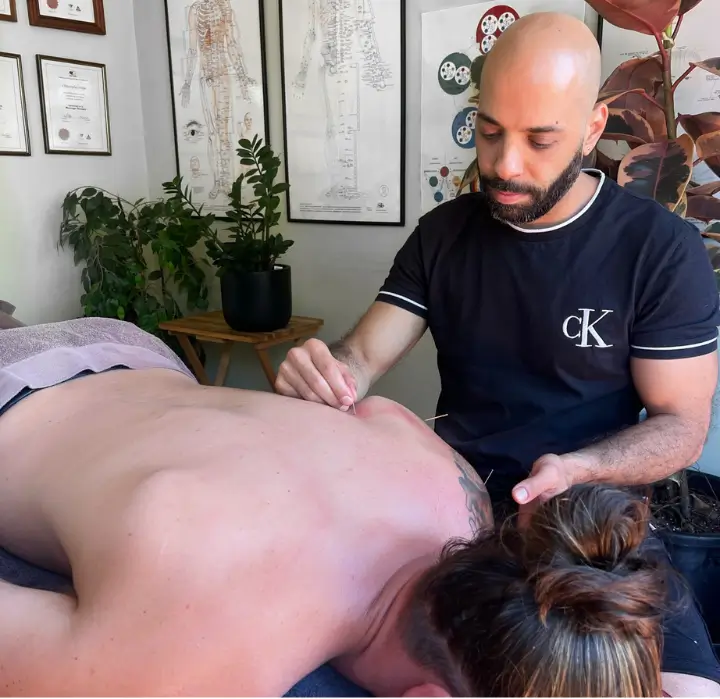
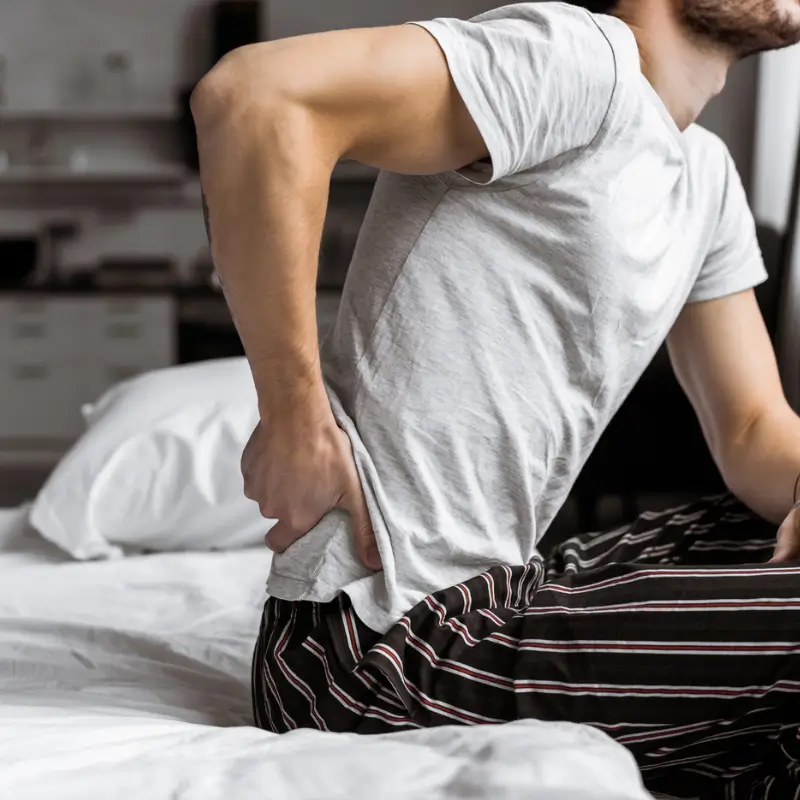
Benefits of Dry Needling
Exploring the Advantages: Key Benefits of Dry Needling for Pain Relief and Recovery
Dry needling offers numerous benefits, particularly when incorporated into a comprehensive pain management plan that may include physical therapy, exercise, and other modalities. Key benefits include:
Pain Relief: Effective for managing chronic pain conditions, headaches, back pain, joint pain, and other musculoskeletal issues.
Improved Mobility: Helps release muscle tightness, enhancing flexibility and range of motion, beneficial for athletes and those recovering from injuries.
Enhanced Recovery: Promotes faster recovery from injuries by improving blood flow and reducing muscle tension, facilitating the healing process.
Conditions Treated with Dry Needling
Dry needling is used to treat a variety of musculoskeletal conditions, including:
Chronic Pain: Effective in managing chronic back and neck pain linked to muscle tension and trigger points.
Headaches: Particularly useful for tension-type headaches and migraines related to muscle strain in the neck and shoulders.
Sports Injuries: Commonly used to treat muscle strains, sprains, and overuse injuries among athletes, expediting recovery and improving performance.
Joint and Spinal Issues: Beneficial for conditions like TMJ disorders, carpal tunnel syndrome, and various spinal problems where muscle tightness and trigger points contribute to pain and dysfunction.
Other Conditions: Includes shoulder pain, rotator cuff pain, biceps tendinitis, iliotibial band syndrome, Achilles tendinitis, whiplash, neck pain, muscle strains, hip pain, temporomandibular pain (TMJ), and more.
What to Expect During a Dry Needling Session
From Start to Finish: What to Expect During Your Dry Needling Treatment
Before the Treatment
Evaluation: Your provider will review your medical history and perform a physical exam to determine if dry needling is appropriate.
Discussion: They will discuss your symptoms, assess mobility, and evaluate muscle function to identify trigger points.
During the Treatment
Skin Prep: The treatment area is cleaned using alcohol swabs to minimise infection risks.
Needle Insertion: Thin, single-use needles are inserted into the identified trigger points. The depth and technique may vary:
- Superficial: Inserting the needle 5 to 10 millimeters into the subcutaneous tissue.
- Deep: Inserting the needle beyond the subcutaneous tissue into the muscle to reach the trigger point.
Needle Manipulation: The provider may gently move the needle to elicit a local twitch response, indicating muscle reaction.
Duration: Needles may remain in place for as short as two seconds to as long as 20 minutes, depending on the treatment goals.
Additional Techniques: The pistoning (in-and-out) technique may be used, or electrical stimulation may be applied to enhance muscle relaxation.
After the Treatment
Needle Removal: Needles are safely disposed of in medical sharps containers.
Post-Treatment Assessment: Your provider will check for any immediate reactions and ensure you are feeling stable before leaving.
Self-Care: Drink plenty of water to stay hydrated. You may experience increased muscle soreness or bruising near the insertion sites, which typically resolves within 24 to 36 hours. Continue with recommended exercises and stretches to maintain the benefits of the treatment.

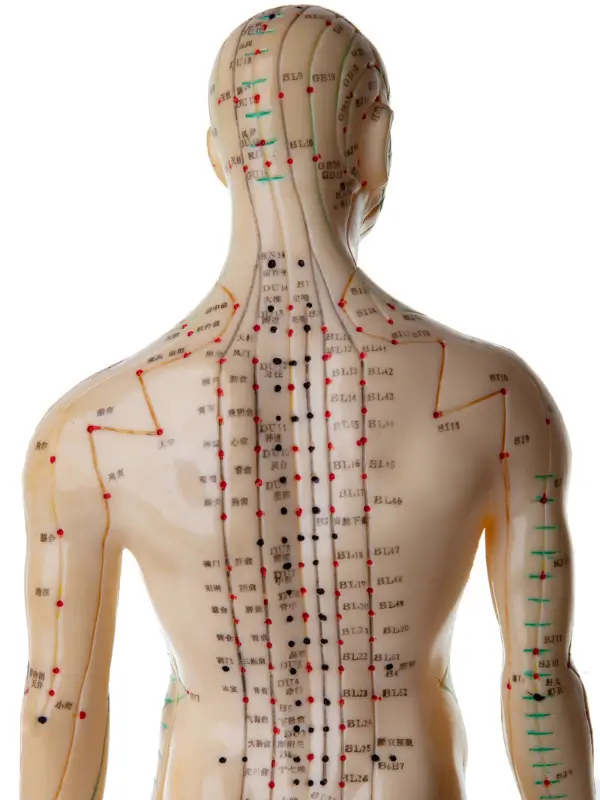
Dry Needling vs. Acupuncture
Key Differences and Similarities
While both dry needling and acupuncture involve inserting needles into the skin, they are distinct practices with different underlying philosophies and techniques.
Similarities
Use of Needles: Both techniques use thin needles inserted at various depths to treat symptoms.
Manipulation of Needles: Practitioners may gently move or manipulate the needles after placement.
Safety and Integration: Both are considered safe treatments and are often part of a larger treatment plan.
Differences
Philosophical Foundations:
- Dry Needling: Rooted in Western medicine, focusing on treating musculoskeletal pain by targeting specific trigger points within the muscle tissue.
- Acupuncture: Based on Eastern medicine, aiming to balance the flow of energy or life force (Qi) through pathways called meridians to treat a broader range of physical and mental conditions.
Training and Practice:
- Dry Needling: Performed by allied health practitioners such as massage therapists, physiotherapists, chiropractors and acupuncturists who are trained specifically in the procedure.
- Acupuncture: Performed exclusively by licensed acupuncturists with training in traditional Chinese medicine.
Treatment Goals:
- Dry Needling: Targets dysfunctional muscle trigger points to reduce pain, inactivate trigger points, and improve movement.
- Acupuncture: Aims to restore energy flow, promoting overall health and treating conditions like pain, fatigue, infertility, headache, insomnia, anxiety, and depression.
Needle Usage:
- Dry Needling: Typically uses fewer needles, sometimes paired with electrical stimulation to enhance treatment effects.
- Acupuncture: Typically involves placing multiple needles along specific meridians and may incorporate moxibustion, a technique where the needles are gently heated to enhance therapeutic effects.
Frequently Asked Questions (FAQs)
Does dry needling hurt?
While trigger points are usually painful to the touch, the insertion of needles may cause mild discomfort or a prick sensation. Some patients experience a local twitch response, which can be slightly painful but indicates muscle reaction. Post-treatment soreness or tightness is common but typically resolves within a few days.
How many sessions of dry needling are needed?
The number of sessions varies depending on the individual’s condition and response to treatment. Some may experience immediate relief, while others may require multiple sessions to achieve optimal results.
Can dry needling be combined with other treatments?
Yes, dry needling is often part of a comprehensive treatment plan that includes exercise, stretching, massage, and other physiotherapeutic techniques to prevent trigger points from reoccurring.
Is dry needling safe for everyone?
While dry needling is generally considered safe when performed by qualified allied health practitioners, there are potential risks and side effects to be aware of:
Common Side Effects
Soreness and Bruising: Mild soreness or bruising at the needle insertion sites is common and usually resolves within a few days.
Stiffness and Fatigue: Some patients may experience temporary stiffness or fatigue post-treatment.
Fainting: Rarely, patients may feel dizzy or faint during or after the procedure.
Rare but Serious Risks
Infection: Although rare, improper sterilisation of needles can lead to infections however this risk is reduced with the use of disposable needles and the use of alcohol swabs at the site of needle insertions.
Pneumothorax (Collapsed Lung): Extremely rare but can occur if needles are inserted too deeply near the thoracic (chest) area. Immediate medical attention is required if symptoms arise.
Nerve Injury: Potential risk if needles inadvertently contact nerves, emphasising the importance of having the procedure performed by a qualified practitioner.
Safety Tips
- Ensure you consult a qualified allied health practitioner.
- Verify that single-use, sterile needles are used.
- Discuss your medical history and any concerns with your provider before treatment.
Who should avoid dry needling?
Dry needling can be a beneficial treatment for many individuals experiencing musculoskeletal pain. However, it may not be suitable for everyone.
Individuals Who Should Avoid Dry Needling
Children Under 12: Due to the potential for pain and the need for consent, alternative treatments are usually recommended.
Pregnant Women: Should consult with their medical doctors before undergoing dry needling.
Individuals with Compromised Immune Systems: Increased risk of infection requires careful consideration.
Those Recently Undergoing Surgery: Healing tissues may not be suitable for needling.
People on Blood Thinners: Increased risk of bleeding and bruising.
Individuals with Needle Phobia (Trypanophobia): May find the procedure too distressing.
Research on Dry Needling
Research supports the effectiveness of dry needling for various musculoskeletal conditions. Here are some key studies and reviews:
Clinical Effectiveness of Dry Needling in Patients with Musculoskeletal Pain—An Umbrella Review:
- Summary: This comprehensive review summarizes numerous systematic reviews and meta-analyses on the clinical effectiveness of dry needling for musculoskeletal disorders. The findings indicate that dry needling is particularly effective for short-term pain relief and may offer additional benefits when combined with other physiotherapeutic interventions.
- Read More: Clinical Effectiveness of Dry Needling in Patients with Musculoskeletal Pain
Common Conditions Treated ~ Specific Studies:
- Low Back Pain: The effect of dry needling on lumbar muscle stiffness in patients with low back pain.
- Neck Pain: The effectiveness of dry needling for myofacsial trigger points associated with neck pain.
- Lateral Epicondylalgia (Tennis Elbow): Dry needling significantly reduces pain intensity and improves grip strength.
Comparison of Dry Needling and Manual Trigger Point Therapy:
- Summary: This study compares the effects of dry needling and manual trigger point therapy on pain and function. The results suggest that both interventions are effective in the short to medium term, with dry needling offering notable improvements in pain-related disability and physical function.
- Read More: Comparison of Dry Needling and Manual Therapy on BMC Chiropractic & Manual Therapies.
Contact Us Today
We are conveniently located in the heart of Brunswick for easy access to all local residents.
Address: 1/68 Melville Road Brunswick, VIC 3055
Follow us on social media for the latest updates and health tips!
Areas We Serve
Brunswick, Brunswick West, Brunswick East, Essendon, Moonee Ponds, Parkville, Coburg, Carlton, Fitzroy, Pascoe Vale South, Pascoe Vale, Thornbury, Northcote.
Registered Health Providers


